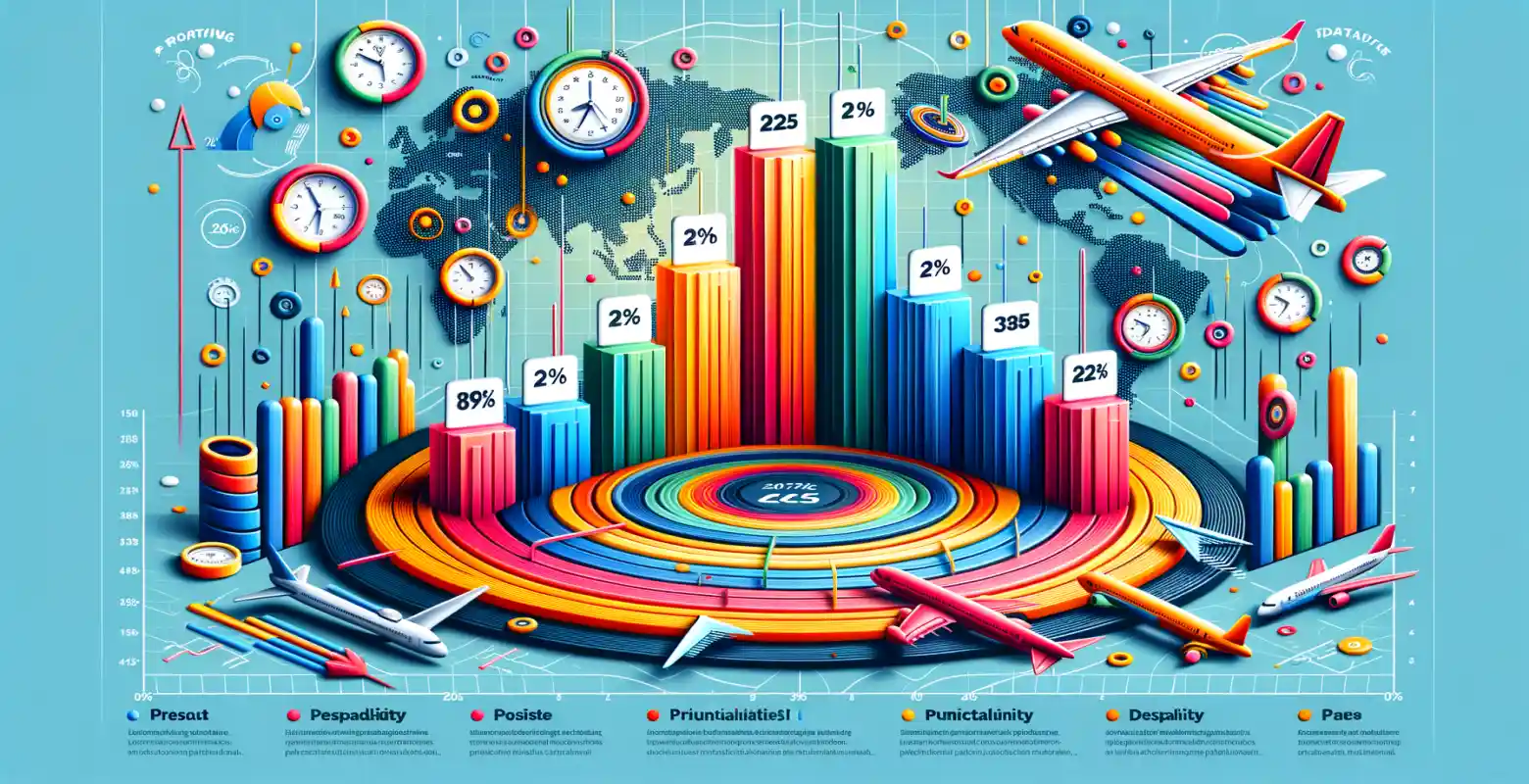Ranking of the most punctual airlines in 2025
Introduction
The year 2025 brings new challenges and expectations in the aviation industry, especially in the context of airline punctuality. Punctuality is a key factor influencing passenger satisfaction and airlines' operational efficiency. In the era of globalization and an increasing number of air travels, expectations regarding punctuality are at an all-time high. In this article, we will examine the ranking of the most punctual airlines in 2025, analyzing which companies stand out among others and what factors contribute to their success in this field.
Definition of Punctuality and Its Significance
Punctuality in aviation refers to the percentage of flights that landed on time or with minimal delay, usually within 15 minutes of the scheduled landing time. For passengers, this means less stress and a better travel experience, while for airlines, it is associated with cost optimization and reputation improvement.
In 2025, punctuality has become even more crucial due to the growing competition in the aviation market and the development of technologies that enable better time and resource management. In the age of social media and reviewing platforms, every passenger opinion matters, and punctuality has become one of the key indicators of assessing the quality of airline services.
Ranking of the Most Punctual Airlines in 2025
Based on analyses conducted by independent agencies such as OAG and FlightStats, we present the ranking of the most punctual airlines in 2025. This ranking takes into account data collected from millions of flights worldwide.
1. Japan Airlines (JAL)
Japan Airlines have returned to the top of the ranking thanks to their innovative approach to flight time management and investments in modern air traffic monitoring technologies. In 2025, JAL achieved an impressive punctuality rate of 90.5%.
2. Qatar Airways
Qatar Airways maintained their position at the forefront due to excellent operational organization and collaboration with international airports to optimize transfer times. Their punctuality rate was 89.7%.
3. ANA (All Nippon Airways)
ANA, similar to JAL, utilize advanced flight management systems, allowing them to maintain high punctuality. In 2025, they achieved a rate of 89.3%.
Factors Influencing Punctuality
Many factors influence airline punctuality. Here are some of the most important ones:
1. Technology
Investments in modern air traffic management systems, such as A-CDM (Airport Collaborative Decision Making), enable better coordination of flight operations, resulting in higher punctuality.
2. Fleet Management
Effective fleet management, including regular technical inspections and route optimization, play a crucial role in minimizing delays.
3. Cooperation with Airports
Close collaboration with airports in managing take-off and landing times as well as transfers is crucial for maintaining a high level of punctuality.
Challenges for Maintaining Punctuality
Despite advanced technologies and efficient processes, airlines still face numerous challenges:
1. Weather Conditions
Weather conditions remain one of the key external factors affecting delays. Airlines must be prepared to react quickly in such situations.
2. Technical Issues
Despite regular inspections, unforeseen technical problems can lead to delays, requiring swift and effective actions from technical teams.
3. Personnel Issues
Strikes, illnesses, or other personnel-related issues can impact flight schedules and cause delays.
The Future of Punctuality in Aviation
In the future, further development of technologies supporting punctuality in aviation can be expected. Artificial intelligence and big data will play an increasingly important role in analyzing and predicting delays, allowing for even better flight time management.
Airlines will also invest in more environmentally friendly and efficient aircraft, which may reduce the number of delays related to technical issues. International cooperation in air traffic management will also contribute to improved punctuality.
Summary
Punctuality of airlines in 2025 is a key indicator of service quality and operational efficiency. Japan Airlines, Qatar Airways, and ANA are leaders in this field, thanks to their investments in technology, fleet management, and cooperation with airports. Challenges such as weather conditions or technical issues still exist, but the future brings promising opportunities through new technologies and innovative solutions.
Both passengers and airlines can benefit from further punctuality development, leading to better travel experiences and increased operational efficiency.






Number of comments: 0